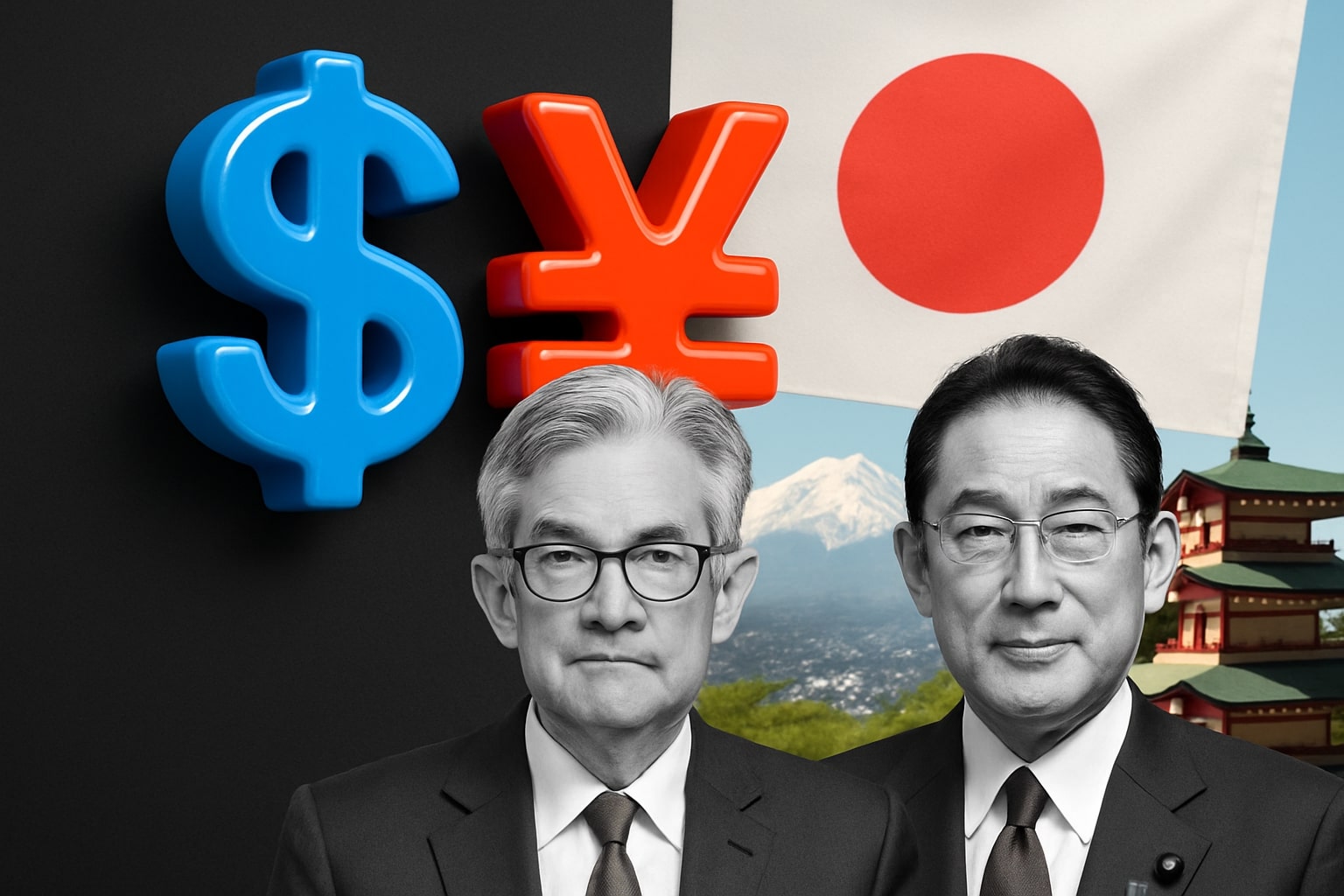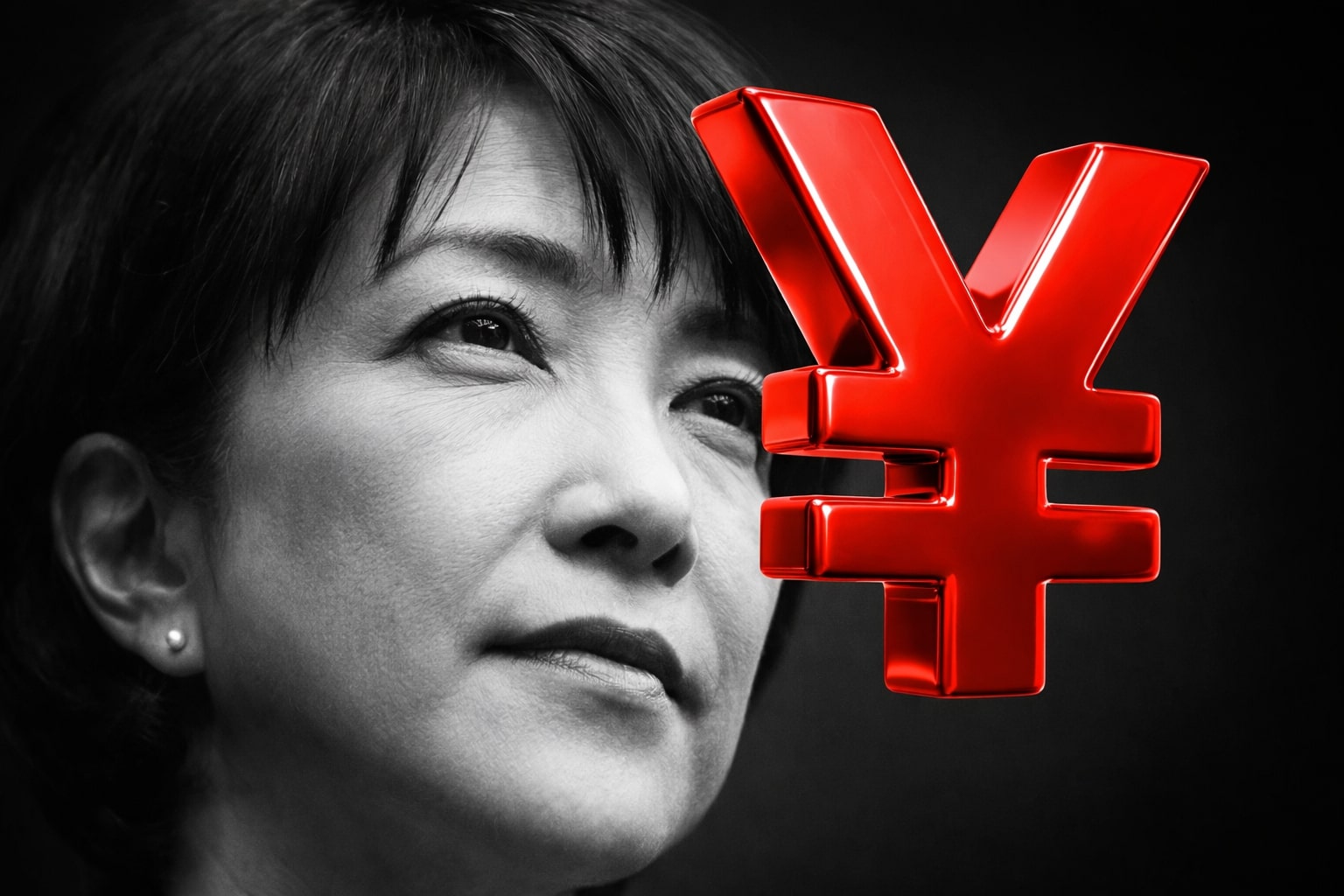
USD/JPY Price Forecast - (JPY=X) Holds 156.50 As BoJ Tightening Talk and Fed Cut Bets Reshape Currency Outlook
BoJ prepares for a December rate hike while Fed cut odds hit 80%. Japan’s wage growth and inflation data could trigger Yen rebound, with USD/JPY downside targets near 153–150 | That's TradignNEWS
USD/JPY Holds Near 156.50 As Market Balances Fed Cut Bets And BoJ Tightening Signals
The USD/JPY pair trades around 156.45–156.60, steady despite broad U.S. Dollar softness and renewed speculation over Bank of Japan tightening. The Yen remains the weakest G8 currency, sliding nearly 5% since early October and more than 10% since U.S. tariff announcements earlier in the year. This depreciation persists even as reports suggest that the BoJ is preparing markets for an interest rate hike as early as December, signaling an imminent shift from ultra-loose policy. Yet, Yen demand has failed to respond, restrained by Japan’s fiscal fragility and fears that aggressive tightening could destabilize domestic consumption and small business credit.
Policy Divergence Narrows As BoJ Turns Hawkish And Fed Eyes Cuts
Markets are rebalancing expectations between a dovish Federal Reserve and a potentially hawkish Bank of Japan, narrowing the long-standing yield gap that has fueled USD/JPY’s multi-year uptrend. The CME FedWatch Tool now prices an 80% probability of a 25-basis-point rate cut at the December 9–10 FOMC meeting, as policymakers signal concern over cooling labor data. Initial jobless claims came in at 216K, better than the 225K forecast, but the prior figure was revised up to 222K, reflecting softening momentum. Retail sales have weakened, producer prices moderated, and consumer confidence continues to erode, reinforcing expectations that the Fed may pivot sooner than markets initially anticipated. Conversely, the BoJ is under pressure to restore currency stability and contain imported inflation, as energy and raw material costs remain elevated in Yen terms.
Japanese Wage Dynamics And Leading Indicators Suggest A Turning Point
Wage negotiations across Japan’s largest corporations have strengthened expectations of a December rate hike, supported by early reports indicating significant base pay increases for 2026. The Leading Economic Index (LEI) is projected to rise from 107.0 in August to 108.0 in September, suggesting improving sentiment among manufacturers and consumers. A recovery in the LEI from April’s 104.2 two-year low underscores improving trade conditions, especially following the U.S. tariff reduction to 15% on Japanese goods in September. The soft Yen has so far offset the profit impact of tariffs, but its extended weakness is drawing political pressure. Prime Minister Sanae Takaichi reiterated that Japan’s government “will take appropriate measures” if currency volatility exceeds economic fundamentals, renewing fears of direct intervention around the 155–156 zone.
Tokyo CPI And Fiscal Pressures Define Next BoJ Decision Window
The next pivotal data release is Thursday’s Tokyo CPI, expected to show moderating inflation but still above the 2% BoJ target, while Japan’s unemployment rate and retail spending figures will shape the outlook for Q4 consumption. Persistent core inflation alongside rising wage costs could give the BoJ justification to signal policy normalization. Domestic fiscal risks remain elevated: Japan’s public debt exceeds 260% of GDP, and interest rate normalization could sharply raise servicing costs, forcing policymakers to move cautiously. Still, a measured 10–15 basis-point hike would demonstrate intent without triggering financial instability. Markets now assign roughly a 45% probability of a December adjustment, compared with just 20% earlier in November.
USD/JPY Technical Outlook Shows Tight Compression Near Key Resistance
Technically, USD/JPY remains in a consolidation band, supported at 155.65–155.70 and capped near 157.20–157.90, where sellers repeatedly defend overhead resistance. The 20-day EMA around 156.10 offers short-term support, while momentum indicators show stabilization. The Relative Strength Index (RSI) stands near 54, signaling room for continuation if yields firm. A break above 157.20 would expose 158.55, the upper resistance level aligned with late October highs. However, failure to sustain above 156.00 could trigger retracements toward 155.00 and 154.70, where strong technical demand zones are clustered.
BoJ Intervention Risk Grows As Yen Weakens Past Tolerable Levels
Japanese authorities are increasingly vocal about curbing speculative pressure. Intervention warnings have resurfaced amid thin liquidity ahead of the U.S. Thanksgiving holiday, a period historically prone to volatility. The Finance Ministry and BoJ jointly intervened in 2022 when the Yen slid below 152, spending over ¥9 trillion to stabilize the currency. With the pair now hovering near 156, traders are alert for a similar move if volatility spikes or the pair tests new multi-month highs. A Reuters report confirms internal BoJ discussions about intervention timing and communication strategy, reflecting government sensitivity to public discontent over imported inflation’s impact on household budgets.
US Macro Slowdown Undermines Dollar Momentum But Yen Still Struggles
Despite growing Fed cut expectations, the U.S. Dollar remains supported by yield differentials that still heavily favor the U.S. curve. The 10-year Treasury yield trades near 4.18%, versus Japan’s 10-year JGB at 0.95%, maintaining a wide spread that limits Yen recovery. However, that gap has narrowed from 4.5% in October, highlighting early signs of yield convergence. The U.S. economy shows mixed signals: manufacturing surveys remain soft, consumer spending decelerates, and the housing market is stabilizing under lower mortgage rates. Yet the Yen’s safe-haven status has been eroded by persistent domestic deflation fears and a lack of sustained BoJ tightening action, leaving speculative traders hesitant to re-enter long JPY positions.
Market Reaction To Wage Data And Fed Rhetoric Could Define Short-Term Direction
The next decisive moves for USD/JPY will depend on incoming Japanese wage data and upcoming Fed communications. Hawkish commentary from FOMC members could lift yields and re-anchor the Dollar above 157.00, while any confirmation of a BoJ rate move would drive a corrective move toward 154.50. The interplay between these two central banks’ stances defines the near-term structure: a dovish Fed coupled with a hawkish BoJ could trigger a multi-hundred-pip decline, whereas even mild U.S. data improvement could reignite the uptrend toward 159.00.
Read More
-
IVE ETF Near $212: Is This S&P 500 Value Play Still Cheap for 2026?
20.12.2025 · TradingNEWS ArchiveStocks
-
XRP ETFs XRPI at $11.07 and XRPR at $15.76 Power $1.2B Inflows as XRP Fights for $2
20.12.2025 · TradingNEWS ArchiveCrypto
-
Natural Gas Price Forecast: NG=F Tests $3.60 Support as LNG Boom and $5 Henry Hub Calls Build Into 2026
20.12.2025 · TradingNEWS ArchiveCommodities
-
USD/JPY Price Forecast - Pairs Surges After BoJ’s 0.75% Hike as Pair Eyes 161.50 Resistance
20.12.2025 · TradingNEWS ArchiveForex
USD/JPY Trading Outlook And Market Positioning
Short-term momentum remains neutral to slightly bullish above 156.00, but speculative longs are cautious. CFTC data shows leveraged funds holding net long positions in USD/JPY, but open interest has started to contract. The market’s focus now turns to Tokyo CPI, U.S. Durable Goods Orders, and unemployment claims as the next catalysts. If Japan delivers stronger inflation and wage prints, it could force a recalibration of rate differentials and fuel a Yen rebound. In contrast, weaker domestic data would reinforce the Dollar’s structural advantage into December’s FOMC.
Verdict: SHORT-TERM HOLD, MEDIUM-TERM BEARISH
Based on the current balance of risks, USD/JPY remains supported in the short term by wide yield spreads and intervention caution, but structural dynamics are shifting in favor of the Yen. A successful BoJ rate hike or stronger wage growth could send the pair down toward 153–150, representing a 3–5% downside from current levels. Unless the Fed resists December cuts or U.S. yields rebound sharply, the medium-term trend for USD/JPY appears bearish, with markets gradually pricing the end of policy divergence.



















